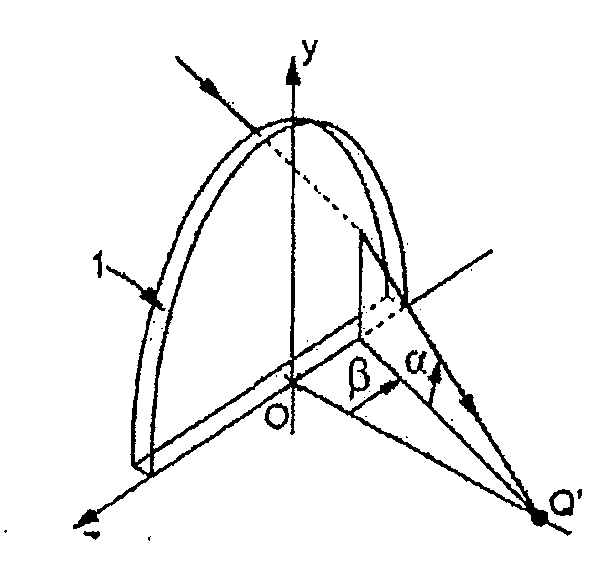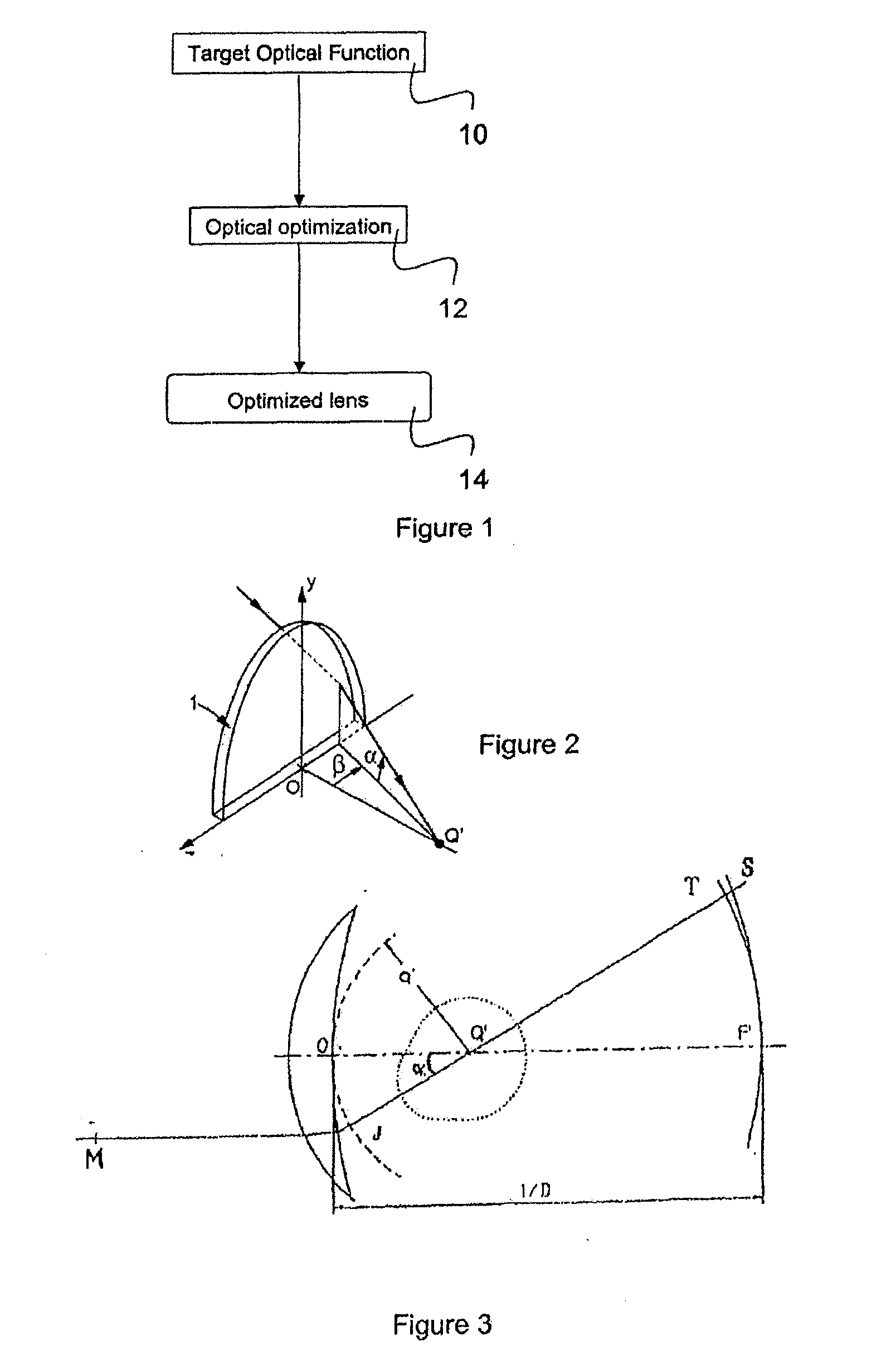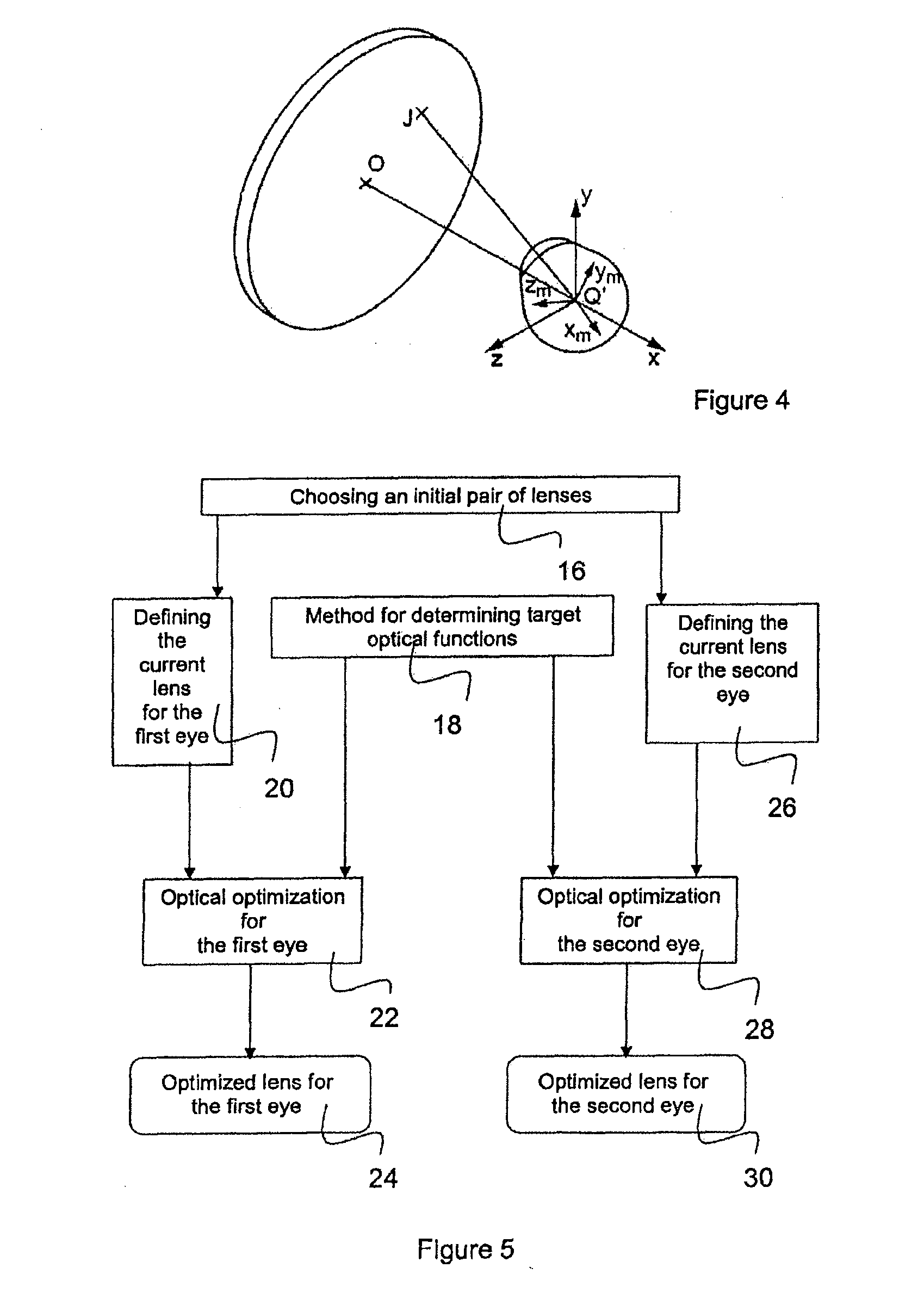Method for Determining Target Optical Functions
- Summary
- Abstract
- Description
- Claims
- Application Information
AI Technical Summary
Benefits of technology
Problems solved by technology
Method used
Image
Examples
example 1
Prior Art
[0179]Example 1 corresponds to an example according to prior art. In this case, the power prescription in far vision is 1.0 δ for the right eye and 3.0δ for the left eye. Further, the addition prescribed is 2.75 δ for each eye. For this example 1, no astigmatism is prescribed for the wearer.
[0180]FIGS. 19, 20 and 21 are the superimposed figures obtained for the target optical functions obtained by a method according to the prior art. For clarity, the target optical function of the left eye is represented taking into account the symmetry between both eye relative to the line joining the two eye rotation centers of the wearer and passing, for instance, through the middle of the segment joining the two eye rotation centers. In the map which is represented:
αleft—map=αleft
βleft—map=−βleft [0181]wherein (αleft,βleft) is the given gaze direction of the left eye and (αleft—map, βleft—map) is the corresponding gaze direction in the right eye frame
[0182]For clarity, the correspondin...
example 2
[0184]Example 2 corresponds to the same example of prescription considered for example 1. Thus, the power prescription in far vision is 1.0 δ for the right eye and 3.0 δ for the left eye; the addition prescribed is 2.75 δ for each eye and no astigmatism is prescribed to the wearer.
[0185]Example 2 corresponds to the results obtained when carrying out the method for determining target optical functions according to the flowchart of FIG. 10. In this case, the first eye is the right eye and the second eye is the left eye.
[0186]The data relating to the right eye which are considered at step 32 are the prescription for a power, an addition and for astigmatism. These data are used to generate a first intermediate target optical function for the right eye OFi1. This corresponds to the step 62 of the flowchart according to the method of FIG. 10. The characteristics of this target optical function are shown on FIGS. 31, 32 and 33.
[0187]Based on this optical function OFi1, it is possible to ge...
example 3
[0192]Example 3 corresponds to the same example of prescription considered for examples 1 or 2. Thus, the power prescription is 1.0 δ for the right eye and 3.0 δ for the left eye; the addition prescribed is 2.75 δ for each eye and no astigmatism is prescribed to the wearer. Furthermore, the right eye is considered as the main eye. To improve the performance of the pair of lenses, the data relative to the main eye will be have more importance in the definition of the two target optical functions.
[0193]Accordingly, example 3 corresponds to the results obtained when carrying out the method for determining target optical functions according to the flowchart of FIG. 12. In this case, the first eye is the right eye and the second eye is the left eye.
[0194]The data relating to the right eye which are considered at step 32 are the prescription for a power, an addition and for astigmatism. These data are used to generate a target optical function for the right eye OFT1. This corresponds to t...
PUM
 Login to View More
Login to View More Abstract
Description
Claims
Application Information
 Login to View More
Login to View More - R&D Engineer
- R&D Manager
- IP Professional
- Industry Leading Data Capabilities
- Powerful AI technology
- Patent DNA Extraction
Browse by: Latest US Patents, China's latest patents, Technical Efficacy Thesaurus, Application Domain, Technology Topic, Popular Technical Reports.
© 2024 PatSnap. All rights reserved.Legal|Privacy policy|Modern Slavery Act Transparency Statement|Sitemap|About US| Contact US: help@patsnap.com










